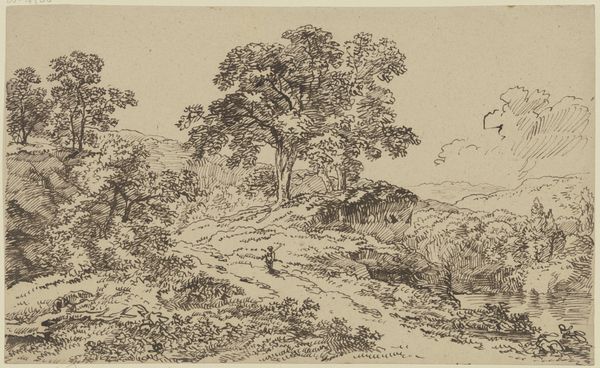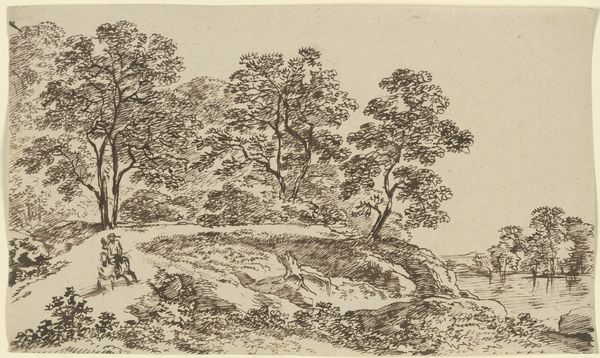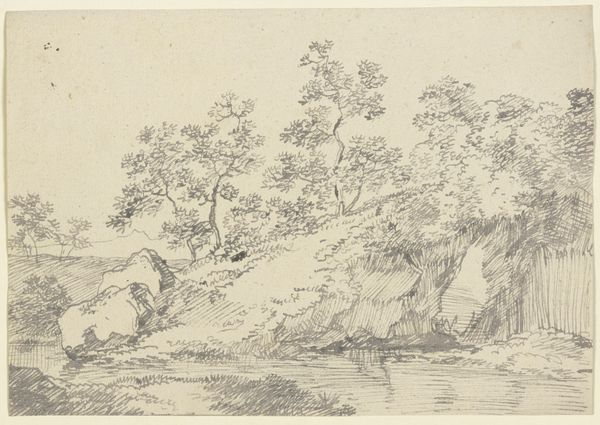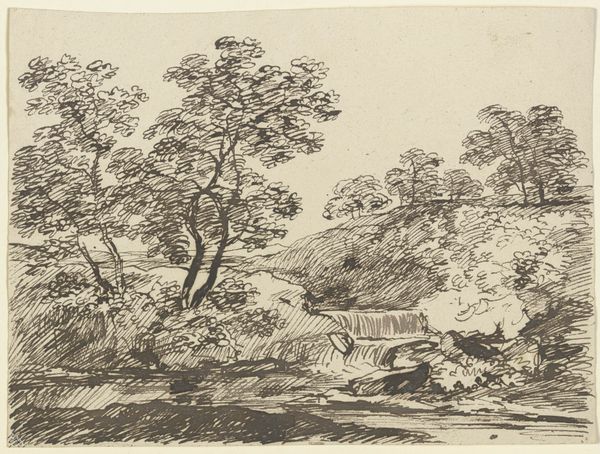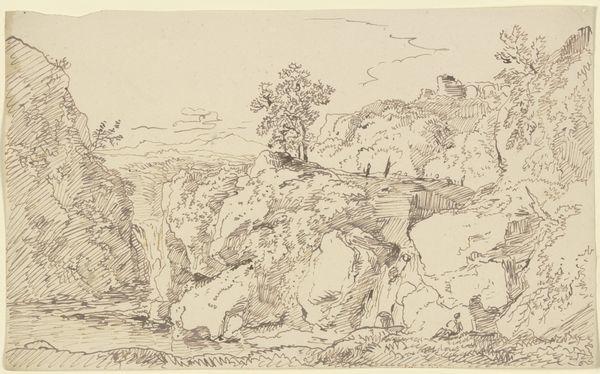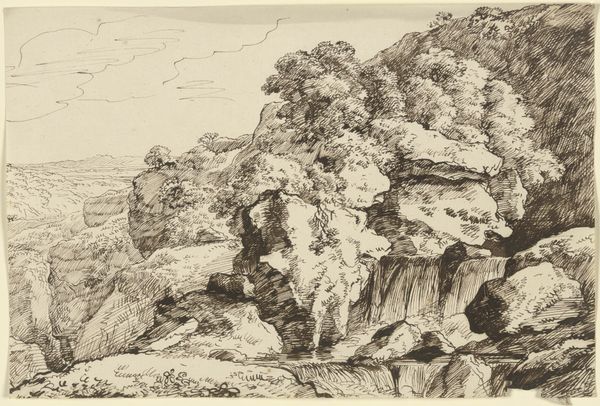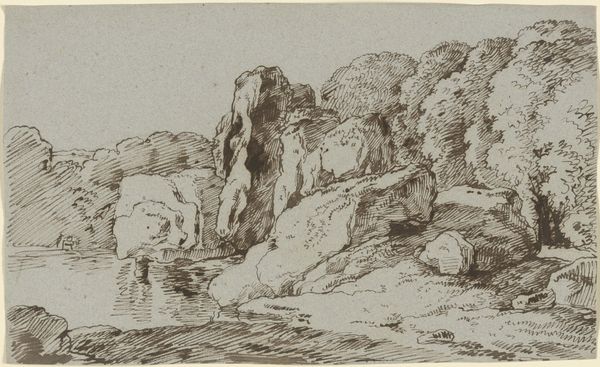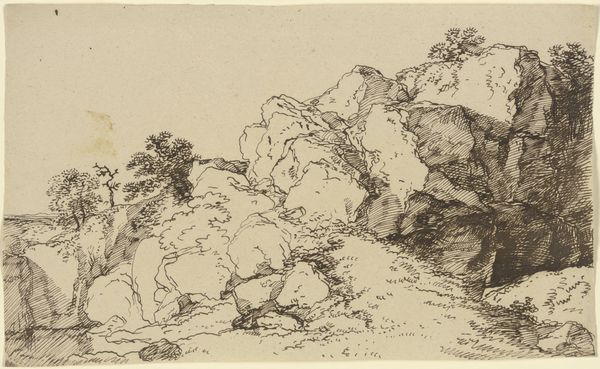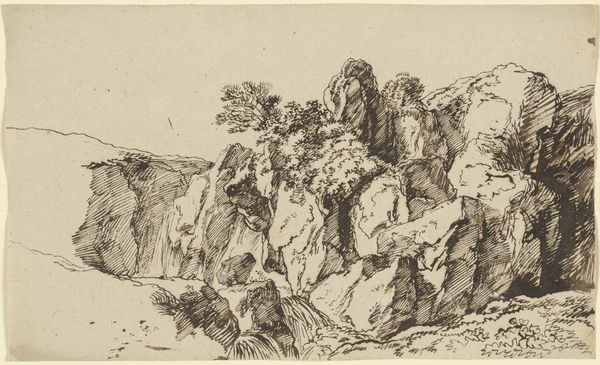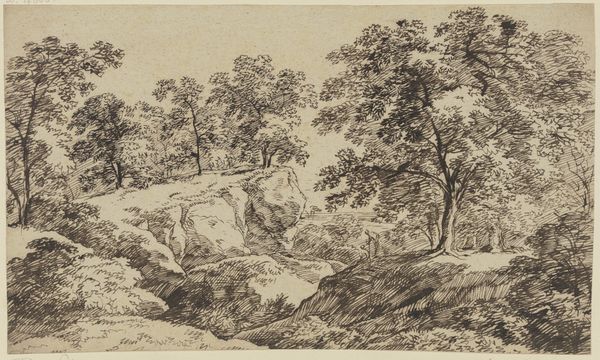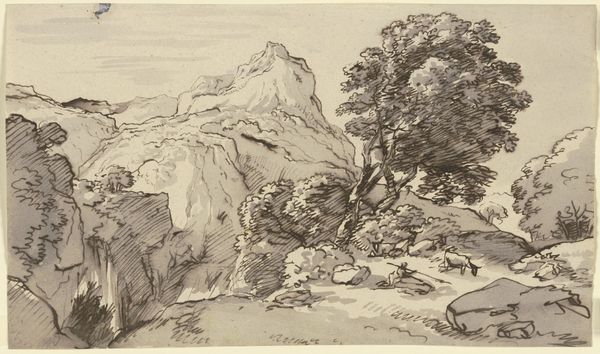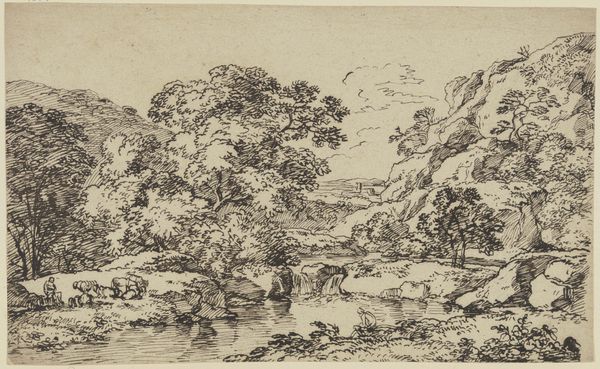
drawing, etching, dry-media, ink
#
drawing
#
etching
#
landscape
#
dry-media
#
ink
#
15_18th-century
#
line
#
realism
Copyright: Public Domain
Curator: Here we have a piece by Franz Kobell. Its title translates to "Rocky plain traversed by a watercourse with grazing cattle." It is currently held here at the Städel Museum. Editor: There’s something immediately appealing about the roughness of the line work, its textured feel. It makes me think about the actual physical work of the artist out in nature, capturing the landscape. Curator: Absolutely, this is a piece produced using etching and ink, so the lines we are seeing, which may at first seem freely expressive, are born from the application of craft—the labour of etching. These lines serve a dual purpose, capturing the detail and shadow of the natural elements but also functioning almost as material signifiers themselves. Editor: What strikes me is how the seemingly untouched landscape here is already inscribed by a pastoral economy, made legible through the grazing cattle included within. How did that landscape evolve socially? Was this always farmland? Were there conflicts surrounding land use here? Curator: What's so fascinating about this drawing is its potential as a reproducible object. Etchings facilitated the wider dissemination of landscape imagery. The materiality and social position of those who purchased these would be very interesting to look at. Landscape becomes not just something beautiful to observe but an active ingredient in an emergent cultural field. Editor: And in terms of artistic production itself, this suggests a tension: between the individualized act of drawing outdoors and its industrialized reproduction. Perhaps Kobell also taught the etching technique to pupils, furthering a more expanded shop aesthetic than individual hand. Curator: Yes, so while we see landscape ostensibly about nature, about being in touch with the outdoors, what we might instead be seeing is the operation of power, ownership, and the commodification of nature through art. I’ll certainly be looking at rural life and its impact differently after this conversation. Editor: I agree, looking closely at process and artistic labour has, in turn, opened my eyes further to the broader socio-economic systems that shaped it.
Comments
No comments
Be the first to comment and join the conversation on the ultimate creative platform.
